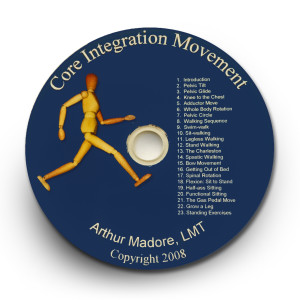I see many people who are in disabling chronic pain. It may have started as a simple whiplash from a minor car accident. There is a significant soft tissue injury that doesn’t show up on an X ray or MRI. They have a lot of pain but without any imaged injury they are frequently given a pain killer and told that it will heal on its own.
This pain then dictates a certain posture to obtain some degree of comfort. It usually prevents them from sleeping well. They start to get fearful that they won’t get better. Long after the original injury has healed they have a collection of bad habits that perpetuate the problem.
- Poor sleep
- Splinting of the area by constant co contraction
- Preemptive protective contraction when initiating movement. The injured area contracts first.
- Inability to perform daily activities. The message to the brain is that the body doesn’t work.
- A feeling that nobody understands their pain
- A sense of hopelessness that they will never get better
- No evidence that it is improving
- Anger that they are becoming addicted to meds. They no longer have the same personality
- Withdrawal from normal activities both work, social and exercise
- Weight gain and muscle atrophy
- Reduced self image that they are falling apart.
- Inordinate level of suffering over and above the actual injury.
- Consumed by the injury. It is difficult to escape mentally, emotionally and physically
As a therapist it can be very challenging to turn this pattern around. I start with an observation as to how much guarding they use to deal with the pain. I lift an arm or leg and assess how much they resist any change in position. You can do this yourself. Sit down and slowly lift an arm or a leg. If the injured limb is guarded it will be much heavier than the unaffected limb. This is a frequent factor in perpetuating the injury.
Once I find a relevant holding pattern I proceed to restore some level of lightness and ease of movement. It is very important that the therapy be perceived as safe. The tension pattern came about originally as a response to pain. I have to proceed slowly and with very light effort. Frequently I start on the unaffected side to show how you can integrate the movement of a limb into more body segments so there is the perception of safe and easy movement.
Sometimes the simple act of breathing can start a pattern of relaxation that you can expand from the ribs to the spine to the shoulder to the arm etc. This idea of movement so small and safe is usually alien to most people in chronic pain. Most modalities involve a much more forceful approach. Patients learn to protect themselves by increasing their muscular tension.
A great example is that of a dancer who had been totally disabled from a fall. She could not sit, stand, walk or sleep without great discomfort. She was in this condition for 18 months. She looked great. She could touch her toes, and lift her leg well past her waist. Yet when I went to lift her leg it felt more like a dense heavy brick. In this case it took me several session just to have her allow any relaxed movement. We agreed that she was so used to forcing the movement that she was in fact perpetuating the strain pattern.
Once she could relax I could get her to find a position of comfort which led to improved quality of sleep. it is very difficult to heal if you can’t sleep. This is therapy 101. Next we reviewed each aspect of how she rolled over in bed, sat, walked, and any other relevant activity. There is always a better way of using your body when you divide the effort into the entire body. No part gets overworked. She gradually regained confidence that movement could be done without pain. Using this safe and easy model we were able to restore her ability to use her body so she could return to hiking and yoga. Her body could trust that these activities were no longer painful.
This is just one approach to chronic pain. Each person presents in a somewhat unique way. Sometimes the problem is more related to the patterns of movement rather than the resistance to movement. Sometimes there is a chronic collapse of the body when sitting, standing and walking. The skeleton is no longer doing its proper job so the soft tissue has to strain. After 27 years of specializing in chronic pain and movement dysfunction in two Boston hospitals, I have gained much experience in helping people find their way back to a more normal and productive life.
